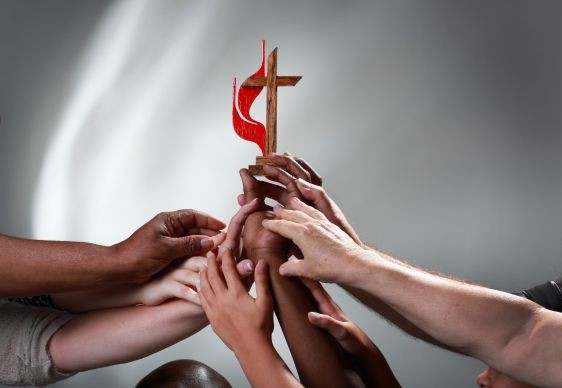As UMC seeks a way forward, retired Bishop Mike Coyner describes how the church reached its current state.
BISHOP MICHAEL J. COYNER
Retired Bishop, United Methodist Church
Like many United Methodists, I am watching and praying for the work on the Commission on a Way Forward which was requested by the 2016 General Conference and named by the Council of Bishops to help the UMC deal with its many concerns and divisive issues. I supported the creation of this Commission, and in fact I served on the writing team (along with several other bishops) to compose much of the language which created the Commission.
However, before we spend too much time and energy seeking a Way Forward, it might help us to remember how we got into our current position. So here is a brief overview of the 200 year trends which have brought us to this place.
- We were once a vital movement of the Spirit to “reform the continent” and to bring people to Christ. Formed officially in 1789 after the American Revolution separated our Methodist revival from England, the new Methodist Episcopal Church of America grew in the late 1700’s and early 1800’s into the largest Protestant movement in America. I use the word “movement” because much of the history of the Methodist Episcopal Church in America reads more like a movement and less like a church. Perhaps that was its source of strength, energy, and success. The movement was focused upon its mission, unafraid to “count” and keep score of its success, and powered by clergy who traveled and sacrificed to form small congregations which were largely laity-led. That movement truly changed the face of the new American nation.
- We allowed ourselves to divide over a social issue and regional differences, led by a division among the bishops. A southern bishop inherited slaves, and under state law he was not allowed to set them free. This became the focal point of a deepening division over slavery, and the bishops themselves split and allowed or led the 1844 General Conference to divide the church into the Methodist Episcopal Church and the Methodist Episcopal Church South. This division was a foretelling of the upcoming division of the USA into North and South and the subsequent Civil War with all of its casualties and horrors. Several historians have noted that the inability of Methodists to hold together and to seek solutions to the issue of slavery (along with the regional differences that emerged) became the model for the whole country to polarize and divide.
- We ceased starting new congregations. Even divided, the Methodist movement in American grew and spread during the latter part of the 1800’s. For a while they were starting a new congregation every day. If you have not read the stories of Bishop Charles C. McCabe and his leadership in launching those new churches (and also doing verbal battle with a famous atheist of the day), it is a history worth studying. But by the end of the 1800’s, the Methodists ceased launching new congregations at such a rapid pace, and in fact the small number of Methodist congregations in what we now call the Western Jurisdiction is a result of Methodists giving up their passion for starting new congregations as the population kept moving west.
- We moved toward educated, settled, and privileged clergy. In the first 100 years of Methodism in America, clergy were mostly lay preachers with little education and with even less desire to “settle down.” Clergy who asked to be assigned to “station charges” did so largely due to being married or to being ill or too worn out to keep traveling. For most Methodist clergy, there was a pride in their willingness to sacrifice and travel to new territories to launch new ministries. They were entrepreneurs. Around the turn of the 19th century that began to change, and clergy wanted to live in civilized areas, to live in church-provided housing, and to have salaries and at least some benefits. Methodist clergy began to be required to have advanced education (which is of course a good thing), but several have observed that was a change from “formation” to “education.” Earlier Methodist clergy in America (and one can see similar patterns in many parts of Africa today) did not have much formal education, but they were “formed” in spiritual disciplines and in what we might call a “mission spirit” to guide their ministry. The early 1900’s began a trend which has increased in the past 100 years toward clergy being “clerics” and “professionals” more than being missionaries. One noticeable change was when clergy appointments were to churches and towns, rather than to territories to reach new populations.
Bishop Coyner offers six more developments. Read more.
Last Updated on December 28, 2022

